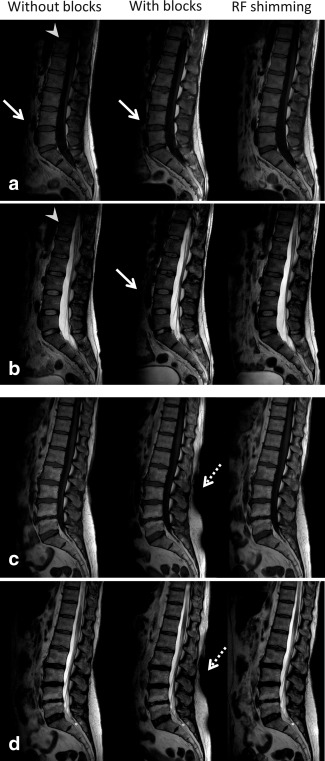Figure 6.

Effect on diagnostic image quality. T1‐ (a) and T2‐weighted (b) lumbar spine images without and with blocks with the system in quadrature mode and with active RF shimming. The PZT blocks in combination with the quadrature excitation RF field result in an overall increase in image quality with respect to no blocks. The improvement achieved by blocks is similar to the actively RF shimmed result, except for the dropoff in signal anterior to the vertebrae (solid arrows), which is also visible in the T1‐weighted images obtained with quadrature excitation without blocks. Both blocks and active RF shimming result in an enlarged FOV in the foot‐head direction (arrowheads) compared with quadrature setup without blocks. T1‐ (c) and T2‐weighted (d) images in female volunteers occasionally show overtipping in regions close to the PZT blocks (dashed arrows). The effect of the confined transmit field when using passive dielectric shimming clearly comes forward in this volunteer. Small geometrical variations were introduced because of patient reposition when placing the PZT blocks. Average images scores are: (a) 4 – 5 – 4.75; (b) 3.75 – 4.5 – 4.75; (c) 4.25 – 5 – 4.75; and (d) 4.5 – 5 – 5.
